How Long Is Warmed Breast Milk Good for?
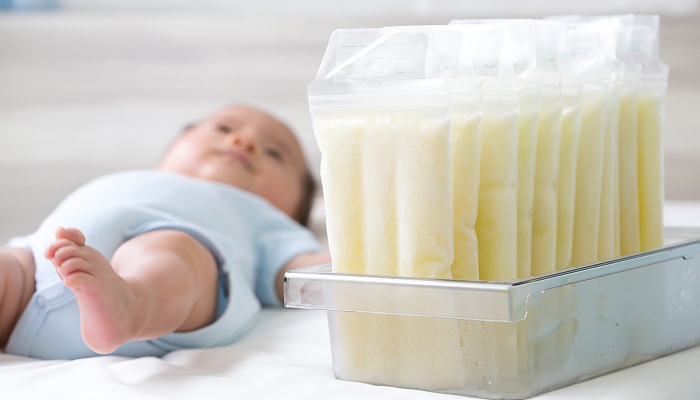
- Store breast milk in approved containers at 40 degrees Fahrenheit or less if not frozen.
- Thaw frozen breast milk overnight in your refrigerator or by using warm water.
- Leave expressed breast milk at room temperature for no longer than 4 hours.
- Breast milk that’s thawed or warmed from a refrigerator should be left out for no longer than 2 hours.
Feeding my three young children was something I enjoyed and was able to do often when my wife returned to work. My wife didn’t have a hard time making milk, and before we knew it, frozen breast milk was dominating our freezer.
But the use of pumped milk brought about a whole new group of questions for me as a parent. Questions on how to store breast milk and how to thaw it had me searching for a breast milk playbook.
The facts around storing, thawing, and knowing how long to keep warmed breast milk are important to keep your baby safe. We’re here to support you in knowing those facts.
How to Safely Store Expressed Breast Milk
There are several important steps to follow when storing expressed breast milk. These will help to keep your baby safe and ensure that their milk is fresh and free from harmful bacteria.
Wash your hands.
Bacteria are often present on our hands and in the environment. This is why washing your hands is so important when storing breast milk. Washing your hands will limit bacteria entering the milk and reduce the risk to your baby.
Bacterial growth is also an important concern when warming breast milk and when allowing milk to remain out of the freezer or refrigeration.
Good handwashing technique should be used by anyone handling breast milk. Make sure to scrub your hands with soap for at least 20 seconds and then rinse under clean running water. Handwashing should be done every time milk is prepared.
Use clean, food grade storage containers.
When storing breast milk, don’t just use any container or storage bags you find around the house. Human milk should be stored in commercial-grade bags designed for storing breast milk, a clean glass, or plastic food-grade container with a tight-fitting lid.
Make sure not to use containers that may be made of BPA containing plastics. To avoid these containers, don’t use a container made of plastics that have recycle symbol number 7 on them.
When using reusable glass or plastic food grade containers they need to be very clean. These containers can be washed and then placed in boiling water for at least 5 minutes. Another way to clean these containers would be to use a dishwasher. If you use a dishwasher with a hot setting, you don’t need to boil the containers.
Keep stored breast milk sealed.
Always store breast milk in a sealable container to prevent exposure to the environment. Containers that are left open to the environment can leave the milk exposed to bacteria. But keep in mind that basic sealable household bags or bottle liners aren’t meant for storing human milk and don’t seal properly.
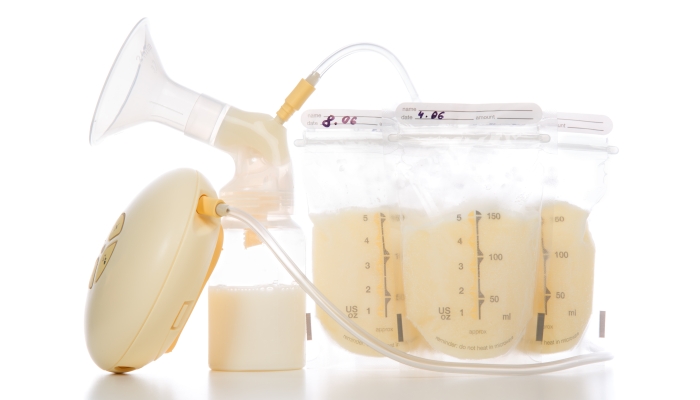
Refrigerating breast milk.
You can store milk in the refrigerator for up to 4 days after placing it in a proper storage container. Refrigerating breast milk is a great option if you can use it within the recommended time frame. It prevents the need to thaw the milk and ends up saving you time.
When refrigerating expressed milk, make sure the refrigerator is set to 40 degrees Fahrenheit or less. If storage space is a challenge, consider using a mini fridge as a solution.
Freezing breast milk.
If you find it best to store breast milk in the freezer, you can keep frozen breast milk for 6 to 12 months. This time frame only applies to freshly expressed breast milk, and you should never refreeze breast milk that was thawed.
When packing up breast milk to go into the freezer, you should leave a little extra room. This is because breast milk expands as it freezes.
Noticing the volume placed in each storage bag or container is also helpful. Try not to store much more than what you expect your child to eat. This will help prevent wasting milk. As your child grows and starts to drink more milk with each feeding, you can always thaw more than one portioned package of milk at a time.
Mixing fresh and stored breast milk.
Is it possible to add freshly pumped breast milk to milk that’s already stored? Yes! It’s okay to combine new milk with milk that’s either in the refrigerator or freezer. The new breast milk just needs to cool first.
You can cool the breast milk in an insulated cooler with ice packs or in your refrigerator. But you don’t want to add warm milk to frozen milk. It might cause that frozen breast milk to thaw a little and then refreeze, and you never want to refreeze thawed breast milk.
Label stored breast milk.
Before putting breast milk in the fridge or freezer, it’s also important to date it for storage. This will help you identify and use the oldest breast milk first. Most breast milk storage bags have a spot to write in the date, or you can buy labels for bottles.
If you expect the milk to be given to a childcare provider, put your child’s name on the container, too. This will help to ensure your child gets the milk meant for them.
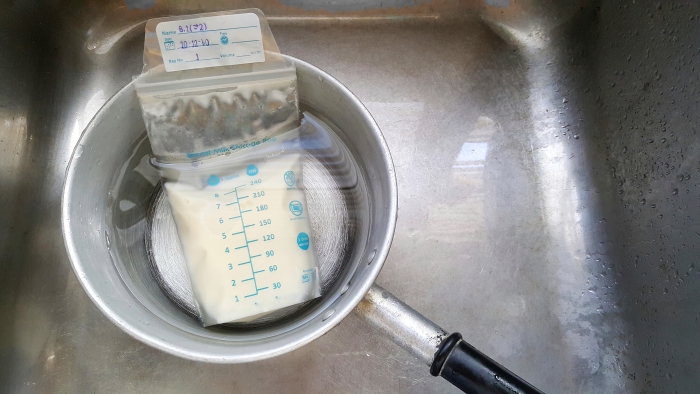
How to Properly Thaw Frozen Breast Milk
There are a couple of different ways to thaw or warm breast milk. One way is to allow the breast milk to thaw in the refrigerator overnight. This is an easy option if you can plan ahead.
But if you don’t have that much time, you can put the frozen breast milk in a bowl of warm water or run it under lukewarm running water until it’s completely thawed. It may be helpful to swirl the milk during this process to help the milk thaw and warm more evenly.
Another option would be to use a bottle warmer. Bottle warmers are designed to safely and evenly thaw and warm the milk. These can save you some time and effort, making feedings a little easier.
However, there are strong recommendations on how you should not attempt to warm breast milk:
- Do not put breast milk in the microwave to thaw. Putting frozen breast milk in the microwave to thaw can cause hot spots that may burn your baby. It can also damage the milk and affect the nutritional value.
- Do not warm breast milk in hot water or boiling water. This can also create potential hot spots and change the properties of breast milk.
Once breast milk is thawed, it should be used as soon as possible. Breast milk at room temperature is safe at temperatures less than 77 degrees Fahrenheit for 1 to -2 hours. Refrigerated breast milk that was thawed, should be used within 24 hours.
Is It Really Necessary to Warm Breast Milk Before Feeding?
Warming breast milk before a feeding is what a lot of people choose to do, but is it really necessary? It turns out warming breast milk is not necessary for all babies.
Breast milk can be served at room temperature or even cold if your baby will take it that way. When it comes to temperature, babies have their own preferences.
However, there are benefits to warming breast milk before feeding it to your baby. Research shows that warming breast milk to body temperature is associated with greater food tolerance. Warmed breast milk is also thought to be digested more easily. The reasoning is that the baby’s body would not need to spend time or energy warming that food up before breaking it down.
How Long Can You Let Warmed Breast Milk Sit Out?
It’s safe for warmed or thawed breast milk to sit out at room temperature for a short period of time. It can be left out for 1 to 2 hours at temperatures of 77 degrees or less.
This is important to know if you have leftover breast milk. For instance, sometimes you might have milk left from a feeding if your baby didn’t finish the entire bottle. Breast milk that’s left over from a previous feeding can be left out for later use—but must be used within 2 hours.
Breast milk storage guidelines for warmed milk will help limit the potential for bacteria to grow in the leftover milk. Bacteria like to grow in warm nutrient-rich environments, and warmed milk that’s left out provides this exact environment.
Since young children do not have a strong enough immune system to protect themselves against bacterial infection, it’s important to limit bacteria growth by not allowing milk to be left out for more than 2 hours.
Basic Safety Tips
The guidelines for breast milk storage and safety are pretty straightforward. Good handwashing and knowing how to properly store and prepare breast milk for feeding will all help keep your baby safe.
The ability to provide breast milk to your child is a blessing that should be supported with these basic safety tips in mind:
- Store milk in approved containers only.
- Containers need to be very clean and have a tight fitting lid.
- Don’t let freshly expressed or pumped milk sit out for more than 4 hours.
- Don’t let thawed milk sit out for more than 2 hours.
- Refrigerated milk needs to be used within 4 days.
- Frozen milk is good for 6 to 12 months.
- Thawed milk put in the refrigerator is good for 24 hours.
- Don’t refreeze milk that has thawed.
- Leftovers from a previous feed need to be used within 2 hours.
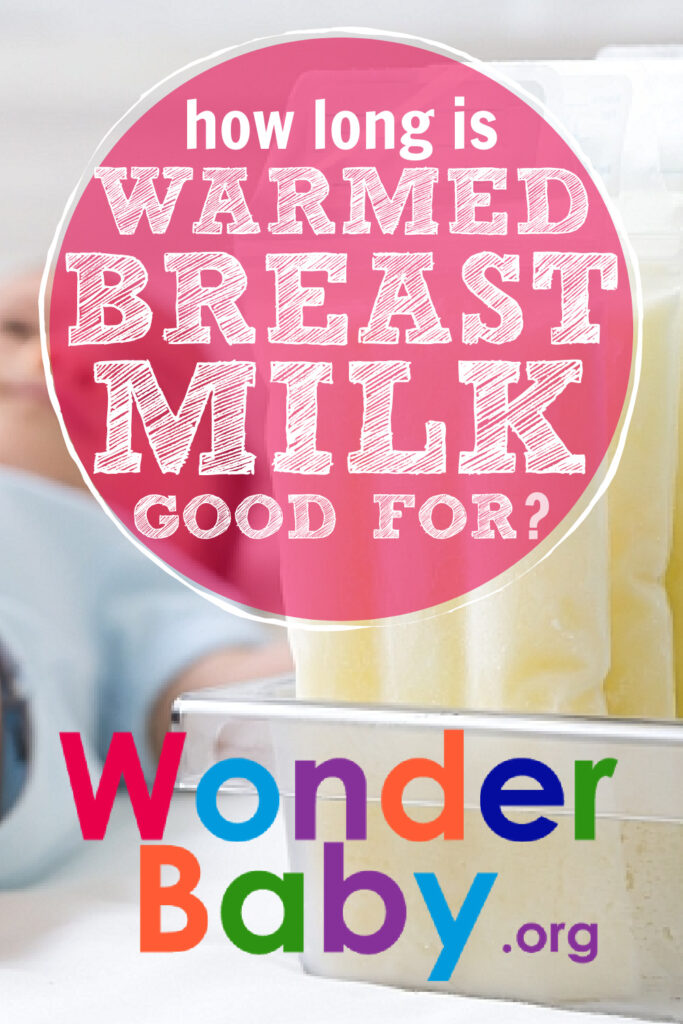
The information WonderBaby provides is not intended to be, and does not constitute, medical or other health advice or diagnosis and should not be used as such. Always consult with a qualified medical professional about your specific circumstances.
Related Posts
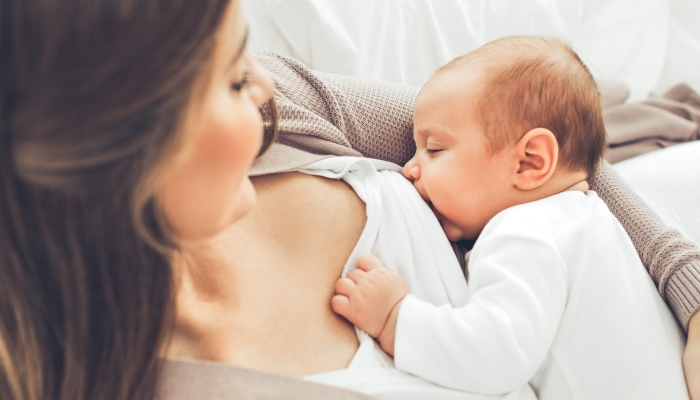
Breastfeeding, Sleep
Sleep and Breastfeeding: A Comprehensive Guide for Nursing Moms
Many people assume breastfeeding and sleep training don’t go together, but it is possible to help your baby sleep better while continuing your breastfeeding journey.
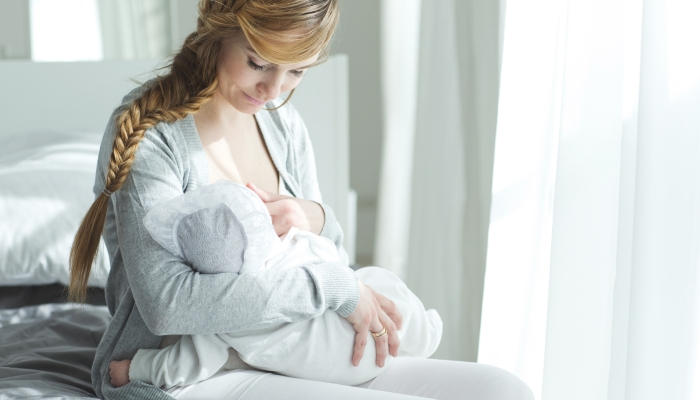
Breastfeeding
Comfort Nursing: Pros, Cons, and How to Stop
Find out what comfort nursing is, when should you worry about it, and how to stop or limit your baby's comfort nursing (especially at night!).

Breastfeeding, Product Reviews
5 Best Breastfeeding Chairs for Nursing Moms of 2023
Whether you want a gentle rock, a smooth glide, or a cozy cuddle to soothe your baby to sleep, you’ll have your pick of the best breastfeeding chairs on the...